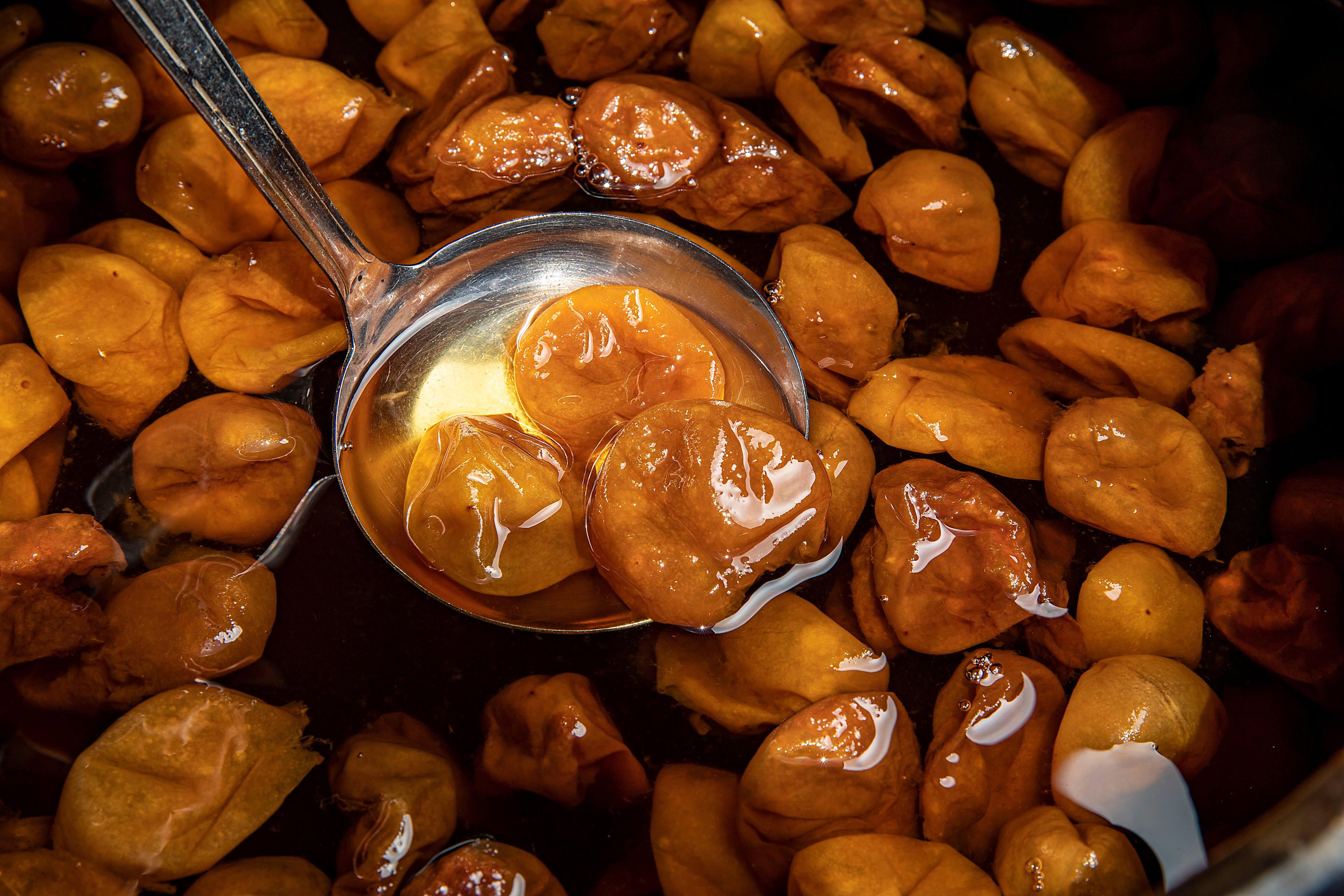How maesil syrup became Koreans’ favorite sweetener
Date Jun 09, 2021
 Maesil (Korean plum) syrup. Photo by Shim Hyun-chul
Maesil (Korean plum) syrup. Photo by Shim Hyun-chul
●Fermented fruit syrup is becoming a popular sugar substitute.
●Summertime sugar consumption soars despite an overall drop.
●Popularity of Korean plum syrup is sparking a debate over health benefits.
A 2019 report released by the Ministry of Agriculture, Food and Rural Affairs found an interesting pattern in the sale of food products between 2015 and 2018 at some 4,200 nationwide stores, including large retailers and convenience stores.
The data showed a nine-percent drop in overall sugar consumption in Korea over the four-year period. Despite the overall decrease, however, sugar consumption actually increased during the summer season.
A closer look into the numbers showed that maesil (Korean plum) syrup had triggered sugar consumption’s summertime surge.
Just as families here season vegetables with garlic, ginger, red pepper and salt-cured shrimp in November to prepare kimchi for winter, they make maesil syrup during the summer to prepare a fruity sweetener to use in almost every food they make.
While “gimjang,” the traditional kimchi making process, has become a culinary practice in many parts of the world, the fermentation process for maesil syrup has mainly been gaining popularity over the past two decades just inside the country.
The popularity of maesil syrup as a healthy alternative to sugar has benefited several industries.
Not only sugar importers, but also companies manufacturing large glass jars, see their businesses boom every summer.
Rising demand for sugar and large glass jars creates a common scene unique to Korea around this time of the year: glass jars of different sizes with colorful plastic lids are stacked on store shelves.
The recipe for maesil syrup is simple: equal portions of sugar and maesil are placed in a big glass jar. Some people stir the contents or layer them up inside the jar to help the two ingredients mix well, while others just leave the ingredients untouched inside the container for months.
Six months is good enough for the ingredients to ferment.
The pungent and sour fruit is inedible raw. But when fermented, it transforms into a wonderful culinary ingredient with numerous health benefits. Rich in nutrients and anti-oxidants, maesil syrup is known to help overcome gastrointestinal problems and boost the immune system.
The rise of maesil syrup as a popular sweetener is a relatively recent phenomenon.
Demand for the sour fruit soared in the early 2000s, shortly after the airing of a hit TV series called “Hur Jun,” about a renowned royal physician during the Joseon period, which featured maesil syrup as a key ingredient for herbal medicines to treat people with infectious diseases. Hur is famous for his encyclopedia of health, the “Dongeuibogam,” which catalogued various diseases and herbal remedies.
Together with this popular TV series, South Jeolla Province-based culinary artisan Hong Ssang-ri also played a part in disseminating the health benefits of the sour fruit by sharing her family’s recipe for maesil syrup.
Since the 1990s, she has educated the Korean public about the fruit and its benefits in her books.
The convergence of the two events awakened the public’s interest in the fermented syrup.
But the popularity of maesil syrup also sparked a debate about its health benefits. Experts remain divided over its effects.
Because sugar is used in the syrup, some doctors call it an unhealthy concoction, warning of the health risks of the sweetener. They claim the syrup is no different than other sweeteners, and thus people should be cautious about consuming too much of it.
But some food experts claim that maesil syrup is different, because it contains lots of nutrients and antioxidants that boost one’s immune system.
The debate, however, does not appear to have dampened the popularity of maesil syrup among local residents, who continue to use it as a key ingredient in Korean cuisine.

The Ministry of Culture, Sports and Tourism's "Korea Here & Now" work can be used under the condition of "Public Nuri Type 1 (Source Indication)."




